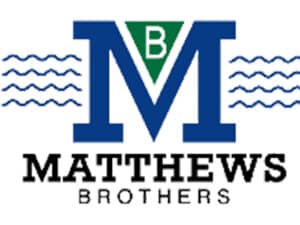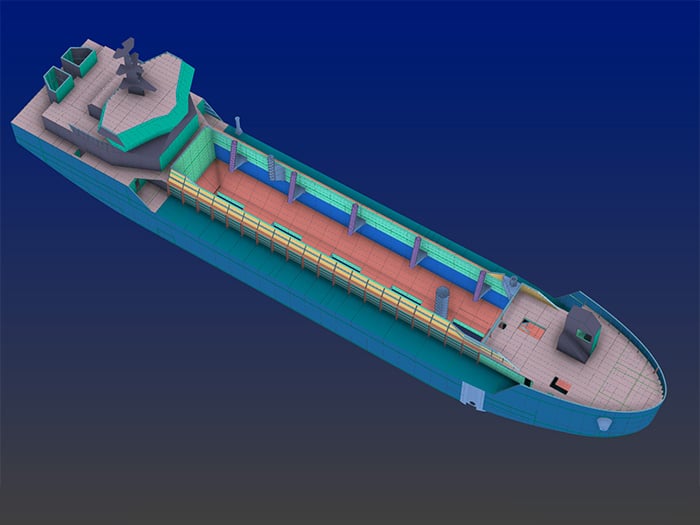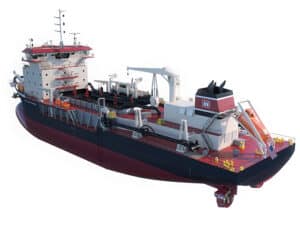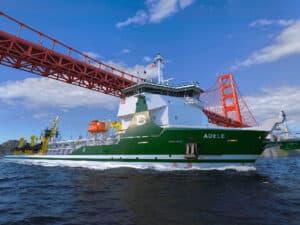
Damen, NAPA and BV in 3D model classification approval first
Written by Nick Blenkey
3D model of hopper dredge was created using NAPA software
A concept design for a 2,500-cubic-meter hopper dredge is the first Damen concept vessel to gain Bureau Veritas (BV) certification using 3D model-based classification approval (3D MBA).
Following this successful implementation of the process, in which class societies review and approve designs using 3D models rather than 2D drawings, Damen Engineering is already using it for further designs including a 1,000-cubic-meter and a 4,000-cubic-meter hopper dredge.
This first approval follows a partnership agreement between Finnish software house NAPA and Bureau Veritas to implement 3D model based approvals using a neutral OCX file format generated by NAPA Designer that enables BV to perform its prescriptive rule checks and calculations utilizing its in-house tools MARS and VeriSTAR Hull.
The NAPA technology enables Damen and BV to work collaboratively on the same 3D model throughout the design and review process. From the very first project, the deployment of 3D MBA has yielded positive results, streamlining communication and saving time, says Damen. Critically, 3D MBA also eliminates a major potential source of errors, as Damen no longer needs to translate the 3D models it uses to design vessels into 2D drawings for class approvals, and then back again into 3D to implement the changes.
“From the outset, 3D model-based approval has delivered on its promises, helping our teams save valuable time,” said Kasia Romantowska, managing director of Damen Engineering Gdansk, part of the Offshore and Specialized Vessels Division of the Damen Group. “We have been using NAPA’s 3D design tools for a long time and being able to go through classification reviews and approval on the same 3D model is a game-changer. Now, all stakeholders in the design process have access to a single, reliable and real-time source of information and this is key to facilitate communication and limit the risk of errors. For Damen Shipyards Group, deploying 3D MBA is also an example of our constant commitment to innovation and this move will help us deliver the safe, reliable, efficient and sustainable ships that will help our clients achieve their goals, whether it is to reduce their environmental footprint or improve their performance.”
THE WAY OF THE FUTURE
“Implementing 3D models throughout the design and approval processes of new ships is the way of the future, unlocking a new level of collaboration and information-sharing in the ship design process,” said Mikko Forss, executive vice president at NAPA Design Solutions. ”This creates a win-win situation that helps teams innovate together, enabling them to make the most of time and resources to deliver the best possible designs. This is particularly important at a time when the decarbonization transition is increasing the pressure on designers and shipyards to create a new generation of greener and more efficient vessels, and incorporate new fuels and technologies on board. We are proud to see 3D MBA supporting real-life projects today and this is thanks to the pioneering spirit of all partners, supported by robust, transparent and comprehensive digital tools.”
“We are delighted to deliver this approval for Damen’s 2,500-cubic-meter dredge concept which is the result of our collective determination to make 3D model-based approvals a reality in our industry,” said Laurent Leblanc, senior vice president technical & operations at Bureau Veritas Marine & Offshore. “This milestone demonstrates the effectiveness and viability of 3D MBA to support closer and more efficient collaboration between designers and our classification surveyors while ensuring that all safety and regulatory standards are met. This collaboration with NAPA and Damen is a tangible demonstration of BV’s commitment to work with pioneers in our industry, supporting the safe innovation needed to meet the safety and sustainability challenges ahead.”




